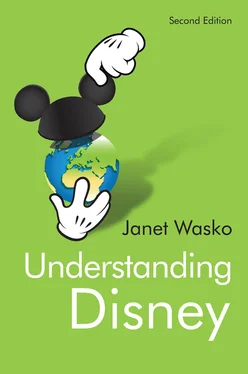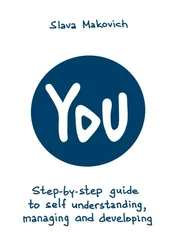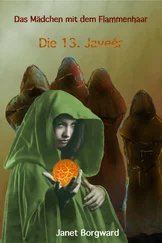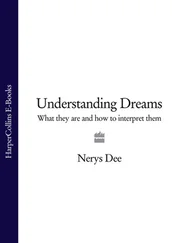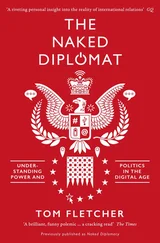I also must admit that, once upon a time, I found myself working “down on Uncle Walt’s farm” (AKA Disney’s studio) in Burbank, California. It was the final in a series of film/television industry jobs that propelled me back to academe to try to understand why the entertainment industry behaved the way it does, and to question its role in society. I now find myself at a university that has a Disney character as a mascot, and I still work on trying to understand media and society.
Many years ago, it seemed like a good idea to offer a course on Disney at the University of Oregon. The course became known by the same title as this book and has covered some of the same territory. Initially, it was an attempt to expand upon a political economic approach to the media, as well as to respond to all those critics who say that political economists are uninterested in texts, audiences, or culture. But it also seemed like it would be a potentially popular course on media – and it has been. Over the years, literally hundreds of students have helped to sort through many of the questions posed in the book, offered their thoughts about the Disney phenomenon, as well as shared their own Disney memories (some of which are included in chapter 7). My thanks to all of them – whether they liked the course or not.
Many other acknowledgments are due. Research assistance was provided by Kris Wright, Adrian Black, Elim Hernandez, Phil Duncan, and Zak Roman. Many thoughtful individuals have forwarded articles, clippings, and email stories (special thanks to Greg Kerber, Brent Cowley, Chris Chavez, and Jeremy Swartz); others have passed along interesting Disney paraphernalia (especially Bill Kunz, Jörg Becker, and Andrew Jakubowicz). Photographs were provided by Andrew Jakubowicz, Rodrigo Gomez, Gabriela Martinez, Graham Murdock, David Gracon, and Ulli Becker. And very special thanks to Wade Larsen and Jeremy Swartz for the cover design.
The people at Polity Press and Blackwell have been (as always) helpful and efficient. Special thanks to Ellen MacDonald-Kramer, Mary Savigar, Andrea Drugan, Elen Griffiths, and Lauren Mulholland for their incredible patience. Also, to Gail Ferguson for careful copy-editing.
And, finally, for years of intellectual stimulation and moral support, thanks to Eileen Meehan, Deborah Phillips, and Jeremy Swartz. And to Joey . . .
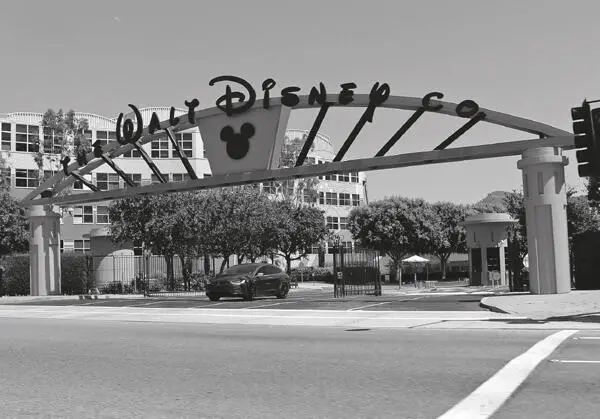
Figure 1.1: The Alameda Avenue entrance to the Walt Disney Studios in Burbank, California. Photo by Coolcaesar.
1 Introducing the Disney Multiverse
From Mickey to Marvel
Since the early 1930s, the Disney company has manufactured stories, characters, and experiences that have been not only popular but beloved by many around the world. Over the years, Disney films, comics, books, toys, theme parks, and other products have been sources of pleasure for many – if not most – young American children, who learn and have reinforced ideas and values that may last a lifetime. Many adults have joined their children in these forms of leisure, dutifully introducing them to the same stories, characters, values, and ideals, or revisiting these sites on their own, renewing the pleasure and satisfaction experienced as children. Indeed, Disney holds an almost sacred place in the lives of many Americans.
The Disney company started in the late 1920s as a small entrepreneurial enterprise when Walt Disney and his brother Roy Disney began producing Mickey Mouse cartoons. The company grew gradually, sometimes experiencing financial difficulties but eventually establishing itself as an independent production company in Hollywood. Never one of the major studios (in fact, the company relied on other companies to distribute its film products), the Disney brothers built a reputation for quality animation, utilizing cutting-edge technological developments such as sound and color.
Despite the independent status of the Disney company in Hollywood, the popularity of Disney’s products and characters was instantaneous and unmistakable. Indeed, the image of Mickey Mouse was a global phenomenon by the mid-1930s. Thanks to the international distribution of Disney films and the merchandising efforts that accompanied them, the Disney company developed a reputation that was magnified far beyond the relatively small company’s resources.
And that reputation has continued as the company has grown. The aggressive marketing of a multitude of Disney products through a wide range of distribution channels all over the world has contributed to a proliferation of Disney images and characters that could hardly have been imagined in the 1930s. Disney products are almost everywhere.
Disney grew to become a dominant player in the entertainment business as the company successfully diversified far beyond the arena of children’s programming. And, since the turn of the century, the company has expanded its scope even further with key acquisitions of other successful companies, as well as adjusting some of its messages and characters, sometimes even including overt portrayals of violence and sexual content. Yet it still maintains its reputation for producing family entertainment that is safe, wholesome, and entertaining. Thus Disney is able to remain extremely influential, if not dominant, in the marketing of children’s and family entertainment, as well as its other lines of business.
From universe to multiverse
In 1973, in his book Mass-Mediated Culture , Michael Real described the Walt Disney Company as the “Disney universe.” 1He argued that the term was appropriate because: (1) the Disney organization used it; (2) it signified the “universality” of Disney’s products; and (3) the Disney message created “an identifiable universe of semantic meaning.” Following Real’s lead in the previous edition of Understanding Disney , the concept of the Disney universe was defined as “the company, its parks, products, and policies, the individuals who manage and work for the company, as well as Disney characters and images, and the meanings they have for audiences.”
But, as noted above, the Disney company has expanded dramatically since 2000, becoming one of the largest and most dominant media and entertainment corporations in the world. The company has added several key companies and franchises that also have become known as universes – Pixar, Marvel, Lucasfilm, and 21st Century Fox. These are now owned by the Disney corporation, which has become greater than just one universe. We can now refer to something called the “Disney Multiverse.”
The definition of “multiverse” refers to many universes or, more specifically, “a hypothetical collection of potentially diverse observable universes.” Though scientists are not all convinced of the actual existence of multiverses, it is a concept that is often used as a metaphor.
The notion of a Disney Multiverse has received some attention from fans who explore overlapping films and worlds, game designers who have created a few Disney Multiverse games, and so on. The company itself has provided examples of their multiverse, for instance at their theme parks, and most recently in the film, Ralph Breaks the Internet . But, as in the Marvel and Star Wars universes, these examples relate only to narrative universes, or in other words, focus on locations, time periods, stories, and characters from films, television programs, books, and so on.
In this discussion, the Disney Multiverse refers to the totality of Disney , not merely its various narrative universes. It includes all of the previously mentioned components of the Disney corporation – its corporate management, directors, shareholders, and employees; its corporate ethos, policies, and strategies; its divisions, products, services, and properties; its content, values, and meanings; and its audiences, consumers, and fans; as well as the other universes that it owns (Pixar, Marvel, Lucasfilm, and 21st Century Fox) (see Figure 1.2). Not only are we interested in how these universes are different – with their own products, characters, narratives, etc. – but also important are the ways in which they are controlled by the Disney corporation and influenced by its policies and strategies, as well as how these universes may connect/interact as part of the Disney Multiverse. More details about these components and their relationships will be explored in this volume as we seek to understand this immense, multifaceted, and significant entity.
Читать дальше
